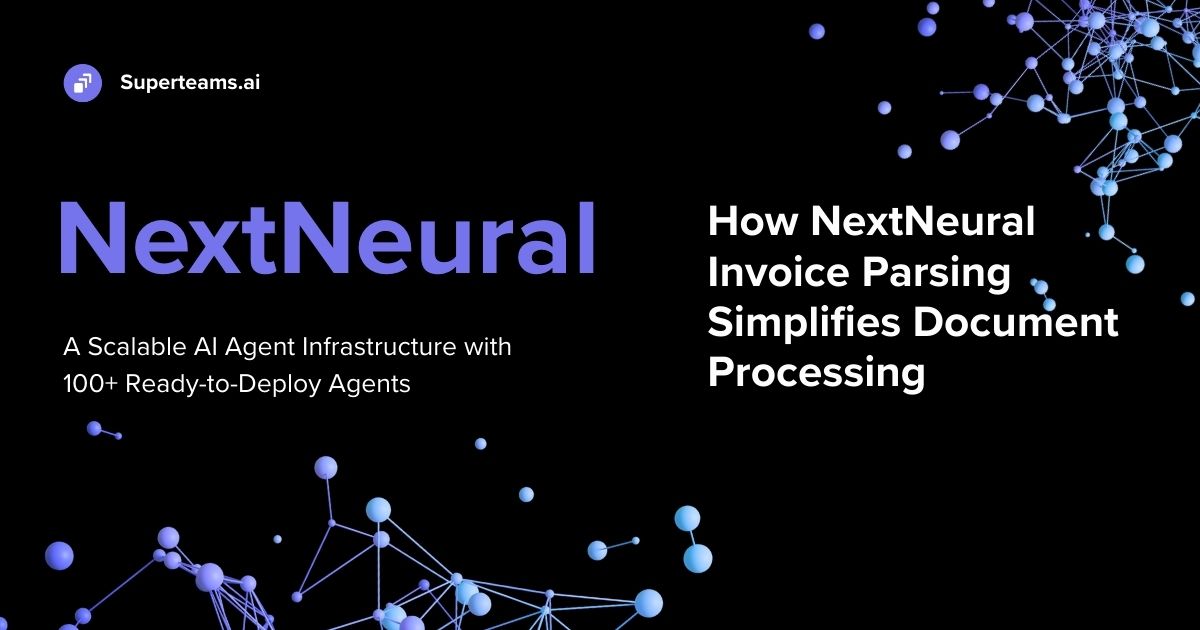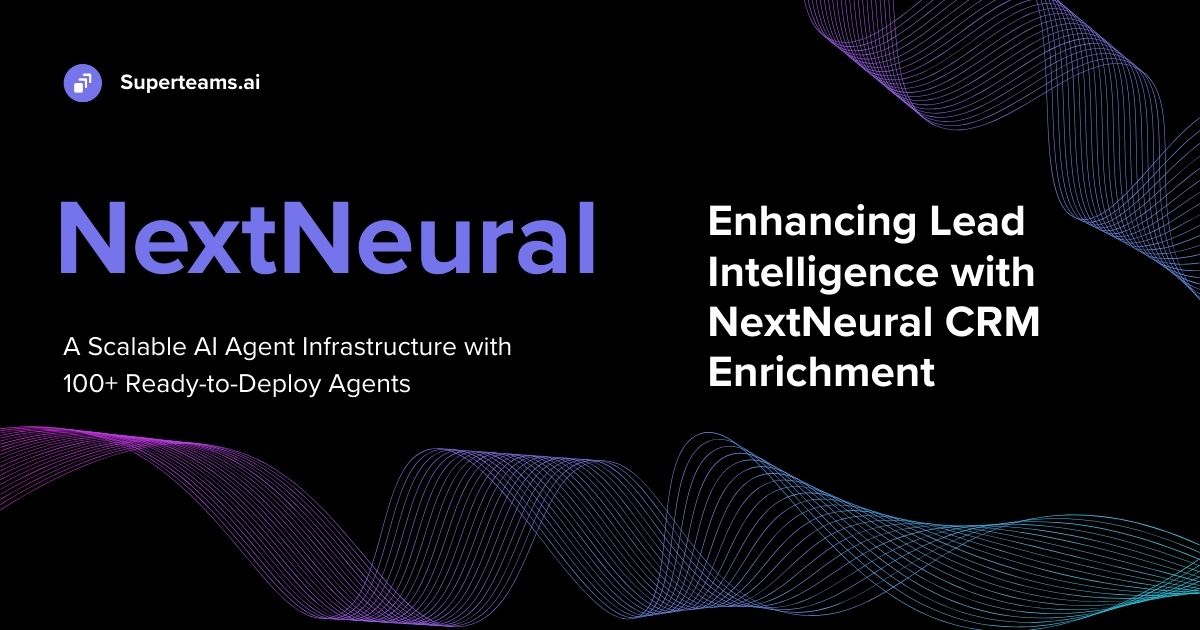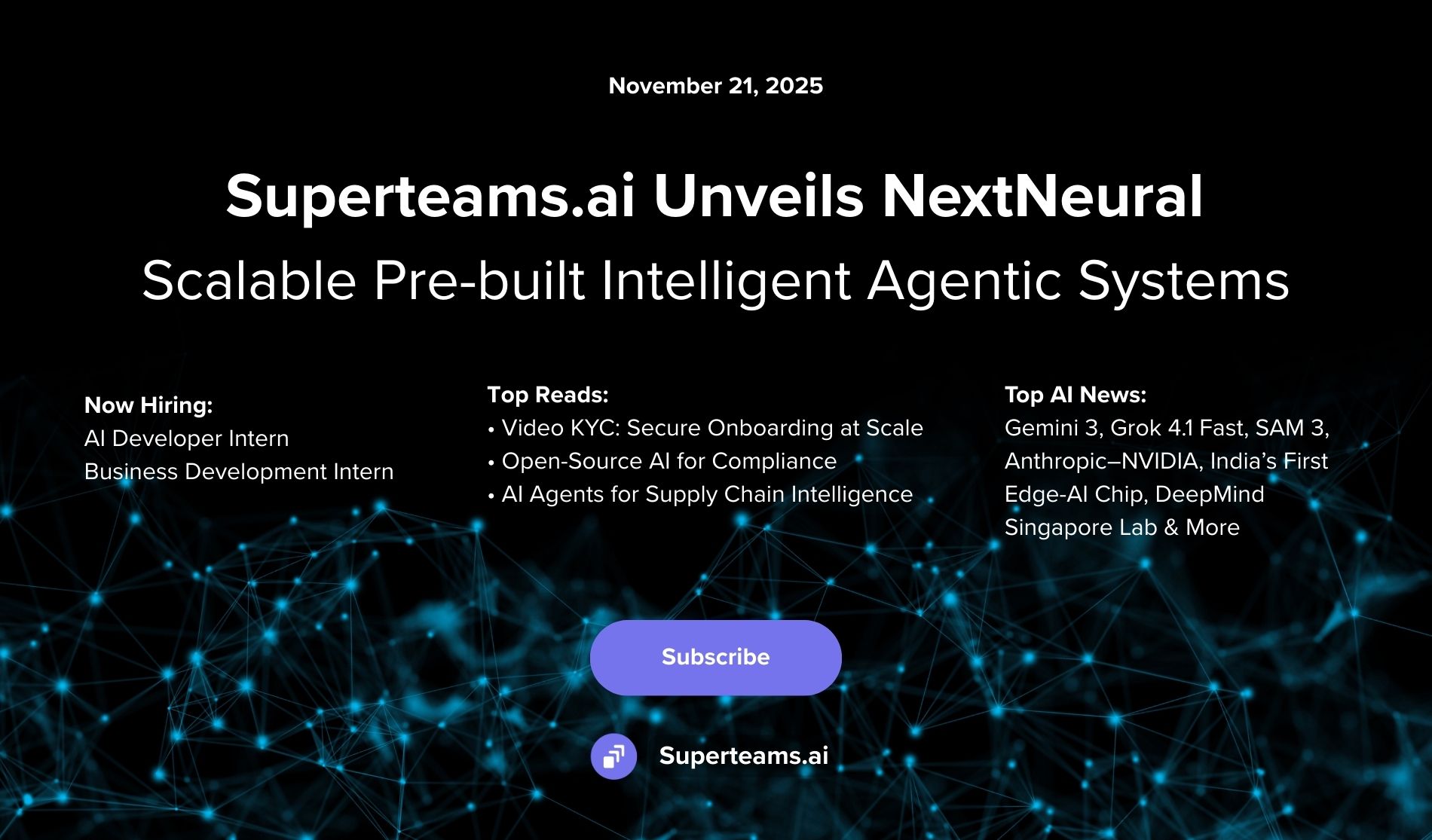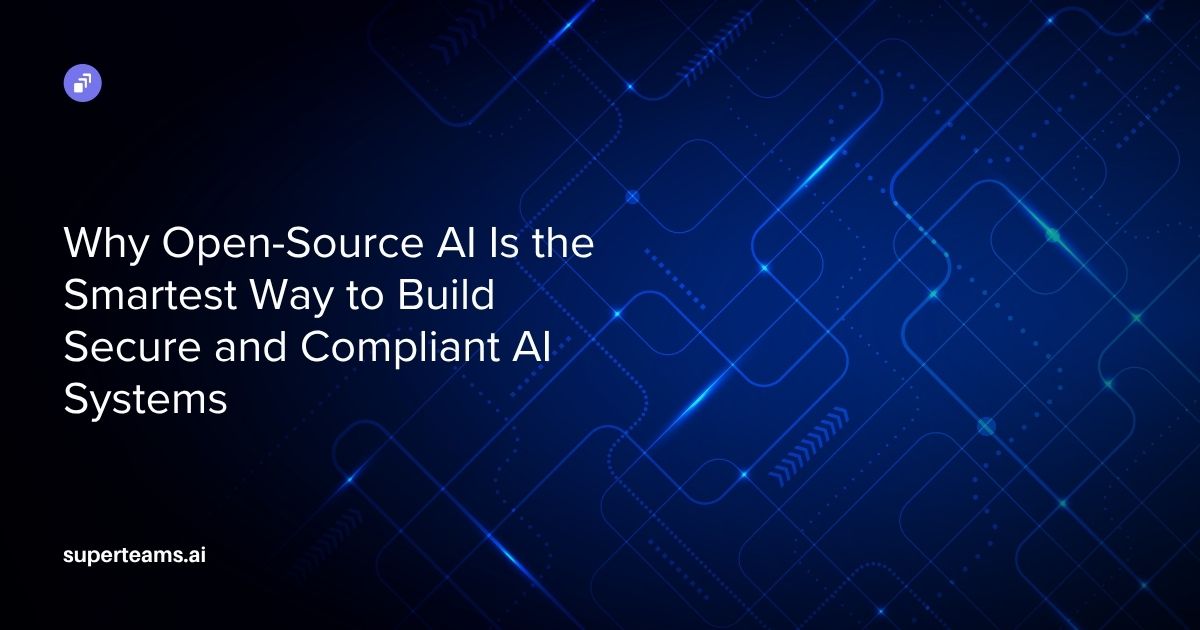How NextNeural Invoice Parsing Simplifies Document Processing
NextNeural uses AI agents for invoice parsing, eliminating template failure & OCR limits. It guarantees data sovereignty and compliance for BFSI/Manufacturing, with speed and accuracy

Even in 2025, invoice processing inside large enterprises still feels strangely analogue. A vendor sends a PDF that looks nothing like last month’s version. Another sends a scanned image with faint ink. A third simply forwards a photo taken under tube light. Finance teams stitch together numbers, chase clarifications, and manually push approvals across procurement, compliance, and accounts payable.
Every enterprise leader knows this workflow is broken — but fixing it has always been harder than it sounds.
OCR tools can extract text but choke on layout changes. RPA bots fail whenever vendors change their invoice format. New SaaS tools raise data-sovereignty concerns. And in regulated industries like BFSI and climate tech, sending financial documents to foreign clouds is simply not permitted.
This is the environment in which NextNeural, Superteams’ AI Agent Infrastructure, is quietly reshaping document automation. Among the 100+ multi-modal agents inside NextNeural, the Invoice Parsing Agent has become one of the most widely adopted because it solves a universal problem: enterprises need accuracy, speed, and secure, compliant automation — not another dashboard.

The Invoice Problem Isn’t About Documents. It’s About Time, Risk, and Trust.
Consider a typical month-end inside a mid-sized manufacturing company.
Procurement has issued 300+ purchasing documents and purchase orders. Vendors have delivered shipments to three plants. Stores departments have generated GRNs. Finance must match all of this before releasing payments.
But the documents don’t match in format or quality.
“Some of these invoices are crisp PDFs,” the CFO of a Pune-based automotive supplier told us. “Others look like they survived the monsoon. I can’t build automation and control on chaos.”
This is the hidden cost:
- delayed approvals slow down manufacturing automation workflows
- manual entry creates reconciliation errors
- poor audit trails expose the company during compliance checks
- vendor relationships suffer due to late payments
Most enterprises don’t want a shiny tool to “read invoices.” They want a reliable process automation layer that fits into their existing systems without creating new risks.
NextNeural Takes a Different Approach: Agents, Not Templates
Instead of relying on brittle OCR templates or rule-based automation, NextNeural deploys specialised AI agents that work together the way human teams do.
This gives NextNeural the flexibility to handle different invoice formats without manual template-building — something most legacy systems cannot achieve.
When an invoice is uploaded — whether a clean PDF or a low-resolution scan — the Invoice Parsing Agent does more than just extract text. It interprets structure, understands line items, checks tax calculations, and identifies inconsistencies that humans often miss.
This is possible because the agent uses a combination of:
- document vision models
- layout-aware transformers
- domain-specific reasoning layers trained on financial logic
- validation heuristics
- optional private LLM training using the enterprise’s own document corpus
Enterprises don’t need to build anything. The agent comes pre-trained but continues improving as it sees more organisation-specific invoices.
Because NextNeural consists of different types of AI agents — extractors, validators, approvers, auditors — all working in tandem, the system behaves more like an automated finance team than a standalone tool.
What truly separates NextNeural from generic invoice tools is its ability to operate in secure, sovereign environments: on-prem, in private VPCs, or inside tightly controlled cloud setups. No data ever has to leave the organisation.
A Walkthrough: From PDF Upload to Approval
This is where the full power of an enterprise-grade pdf invoice parser becomes visible.
When a document enters the system, the workflow unfolds smoothly:

Ingestion
The agent accepts PDFs, images, email attachments, or scanned batches, including rotated, blurred, or multi-page files. This is significantly more robust than traditional invoice scanning systems.
Understanding Structure
Instead of relying on templates, NextNeural analyses layout: headers, tables, tax blocks, totals, and line-item grids.
Extraction and Reasoning
It identifies vendor details, dates, PO references, GST components, and per-item quantities. It also checks consistency; for example, if SGST/CGST totals mathematically align with the subtotal.
These are classic examples of AI agents working through a structured reasoning pipeline.
Verification and Cross-Matching
It can match POs with GRNs, detect duplicate invoices, and highlight anomalies.
Automatic Routing and Approval
The system pushes extracted and verified data into ERP/CRM systems and routes the invoice for document approval based on internal policy.
Here, multiple agents — each type of AI agent — cooperate as part of an automatic control system governing the financial workflow.
Audit Trails
Every step — extraction, validation, human override — becomes a traceable event.
Scenario 1: BFSI: Faster Vendor Payouts Without Expanding the Finance Team
Imagine a large NBFC processing 15,000–20,000 invoices a month across hundreds of service providers, technology vendors, and field operations teams. Most invoices arrive as PDFs forwarded through email chains, while others come as mobile scans from remote branches.
A system like NextNeural’s Invoice Parsing Agent would allow such an NBFC to:
- automatically extract and validate all invoice data
- match totals against POs and budgets
- flag inconsistencies or duplicate submissions
- route approvals to the right internal teams
- maintain clean audit logs for RBI-compliant reporting
With automation programming integrated into their core operations, the outcome is predictable: faster payouts, fewer errors, and a finance team that focuses on oversight rather than data entry.
Scenario 2: Manufacturing: Bringing Order to Multi-Plant Procurement
Consider a precision engineering company with three plants in different states, each managing its own procurement cycle. Vendors submit invoices in dozens of formats: some structured, some scanned, and some still handwritten.
With NextNeural’s invoice parsing deployed inside the company’s private cloud:
- line-item details can be extracted and verified automatically
- GRN, PO, and invoice data can be cross-matched without human intervention
- pricing discrepancies can be surfaced instantly
- approval loops can be streamlined across all plants
- every action can be captured in a unified audit log
This is a classic AI Agent’s example scenario: multiple cooperating agents enforcing automation and control without breaking when document formats vary.
Scenario 3: Climate Tech: Managing Field Invoices and Grant Disbursals at Scale
Picture a climate-tech organisation working across multiple restoration and carbon projects: mangrove planting, watershed work, forest monitoring, soil restoration. Field partners, and NGOs often submit receipts and invoices in mixed formats: handwritten, multilingual, sometimes poorly scanned.
A system like NextNeural would be able to:
- read and interpret low-quality scans using document-vision models
- standardise handwritten or mixed-language invoices
- auto-generate summaries for climate finance reporting
- track expenses against project budgets
- maintain transparent records for auditors and grant partners
In an ecosystem where trust, transparency, and documentation are critical, this kind of process automation would help climate-tech organisations operate with professionalism and speed, even when field conditions are messy.
Beyond Parsing: A Foundation for Process Automation
Once an enterprise starts with invoice parsing, the larger automation strategy becomes obvious.
Because the Invoice Parsing Agent belongs to a larger ecosystem of 100+ AI agents, companies can expand into:
- contract summarisation
- supplier onboarding
- sales and purchase document extraction
- fraud detection workflows
- document approval loops
- custom automation programming for plant operations
To learn more about how this can help you, talk to our team.







